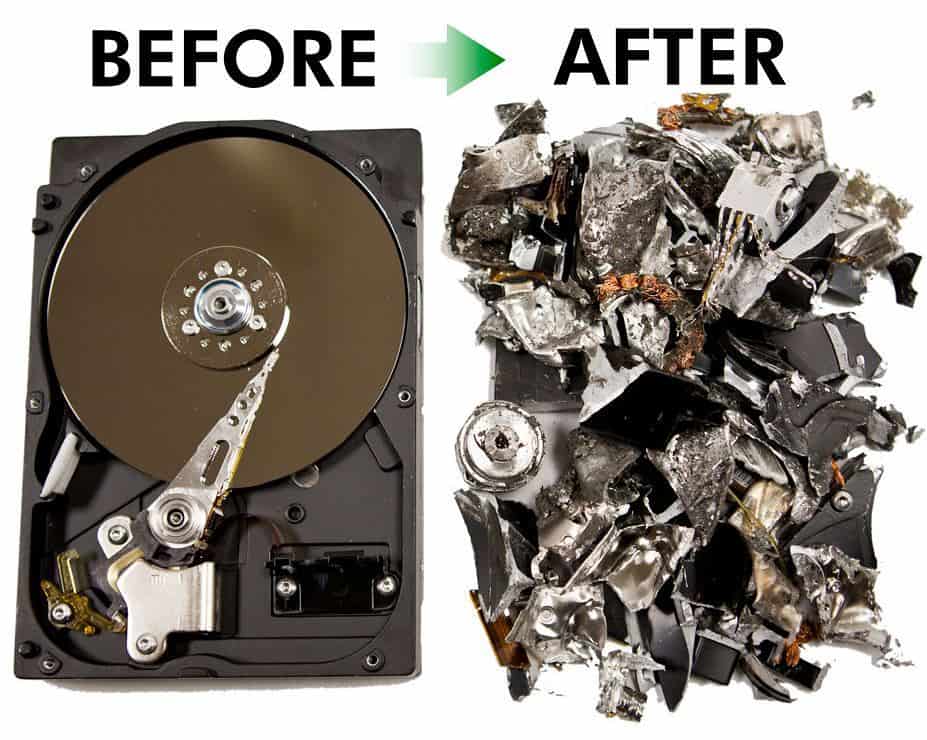Why Data Destruction is a Critical Part of Comprehensive Cyber Security
Why Data Destruction is a Critical Part of Comprehensive Cyber Security
Blog Article
Discovering the Significance of Data Damage in the Context of Computer System Protection Solutions and Protecting Confidential Information
In a period where information violations are increasingly usual, the importance of efficient information damage can not be overemphasized. When no longer required, Organizations needs to adopt rigid procedures to make certain that sensitive info is not just secured throughout its lifecycle however likewise decisively eliminated. The methods utilized for information obliteration, paired with conformity to lawful requirements, play an essential duty in maintaining discretion and count on. However, the implications of these techniques expand past simple compliance, influencing a company's credibility and operational honesty in the digital marketplace. What approaches can organizations carry out to enhance their data damage procedures?
Recognizing Information Damage
Data destruction is an essential element of computer protection that includes the permanent removal of data from storage tools to prevent unapproved gain access to and prospective data violations. In an increasingly digital landscape, companies encounter enhanced risks associated with delicate info being incorrectly accessed or made use of. Reliable data damage safeguards versus these dangers, ensuring that confidential dataâEUR" such as customer details, copyright, and economic recordsâEUR" can not be recouped after disposal.
Recognizing the significance of data damage expands beyond simple compliance with governing and legal structures; it is important for keeping organizational integrity and depend on. When information is improperly taken care of or improperly ruined, the effects can be extreme, consisting of economic loss, reputational damages, and legal obligations.

Methods of Data Elimination

One prevalent approach is data cleaning, which involves overwriting existing data with arbitrary patterns several times. This technique renders the original information irretrievable, making it a preferred selection for companies looking for to shield confidential details.
An additional method is degaussing, which makes use of an effective magnetic field to disrupt the magnetic domains on storage devices, properly getting rid of the data. This technique is particularly effective for magnetic media but is not applicable to solid-state drives.
Physical destruction is an additional robust method, entailing the shredding or crushing of storage space tools. This method assurances that information recuperation is essentially difficult, making it excellent for highly delicate details.
Finally, encryption can act as a corresponding method to data elimination. By encrypting data before deletion, organizations can include an added layer of safety, making sure that also if residues are recuperated, they continue to be inaccessible without the decryption key. Each technique ought to be chosen based on the degree of data sensitivity and the specific protection demands of the organization.
Legal Conformity and Information Security
Organizations should browse a complicated landscape of lawful requirements connected to data safety and security, particularly after carrying out approaches of data eradication. Different laws, such as the General Data Security Law (GDPR) and the Medical Insurance Transportability and Accountability Act (HIPAA), impose strict guidelines on just how companies should get rid of and handle of sensitive data. Failure to comply with these guidelines can lead to significant legal effects, consisting of substantial fines and reputational damage.
Information devastation procedures have to be thoroughly recorded to demonstrate conformity with appropriate legislations and criteria. This paperwork not only works as proof of adherence to legal responsibilities yet also illustrates a commitment to securing delicate info. Organizations ought to also establish clear policies relating to data retention and devastation timelines, making certain that data is not held longer than needed.

Additionally, normal audits and evaluations of data devastation methods are vital to maintain compliance and adapt to advancing legal frameworks (data destruction). By proactively addressing legal demands, organizations can reduce risks associated with information breaches and show their dedication to information safety and security. Ultimately, focusing on lawful compliance in information devastation processes is not just a governing responsibility, yet a fundamental facet of a durable information safety approach
Influence On Company Track Record
The credibility of a company can be considerably influenced by its technique to information devastation and management. In today's digital landscape, where information violations can happen anytime, the failure to properly take care of delicate information can lead to extreme effects. Organizations that improperly handle data damage threat exposing private consumer details, which not just goes against privacy regulations however also erodes count on among stakeholders and customers.
A ruined reputation can result in decreased client loyalty, as clients end up being hesitant to engage with a service that has demonstrated neglect in protecting their information. Furthermore, unfavorable publicity bordering a data violation can have an enduring result, as prospective clients might be discouraged by the regarded absence of safety and security. This can bring about a direct decline in profits and market share.
Furthermore, companies that prioritize information destruction as component of their safety method can enhance their credibility by showcasing their dedication to safeguarding sensitive info. By adopting rigorous data management practices, companies can not just alleviate threats yet additionally position themselves as reliable entities in their corresponding sectors, therefore strengthening their general brand name picture.

Ideal Practices for Secure Disposal
Implementing finest techniques for safe and secure Full Article disposal of data is vital for mitigating risks related to information violations and ensuring compliance with personal privacy laws. Organizations needs to adopt an extensive information disposal policy that describes navigate here treatments for both physical and electronic data destruction.
For physical data storage devices, such as disk drives, shredding or degaussing is suggested to avoid information recovery. Furthermore, companies must keep a chain of guardianship paperwork throughout the disposal process, making certain responsibility and traceability of disposed things.
For digital information, utilizing software that abides by market standards for data wiping is important. This software program needs to overwrite existing data several times, making recuperation practically difficult. It is likewise vital to validate the performance of the information damage process with audits or third-party analyses.
Educating employees on secure disposal techniques adds one more layer of protection, as human mistake can commonly result in data direct exposure. Frequently evaluating and upgrading disposal policies makes certain placement with advancing laws and technical developments. By applying these ideal methods, organizations can dramatically minimize the risk of unauthorized information gain access to and boost their general data security approach.
Verdict
To conclude, information damage is an essential facet of computer system protection services that makes sure the protection of secret information from unapproved access. Implementing effective techniques of data removal, adhering to lawful conformity, and identifying the influence on service online reputation are crucial elements of an extensive information security method. By taking on best methods for safe disposal, organizations can foster trust fund with clients and guard delicate data, eventually adding to a more safe and secure electronic landscape.
In an age where information violations are progressively typical, the significance of effective data devastation can not be overstated.Information devastation is a crucial element of computer safety that involves their explanation the long-term removal of information from storage tools to protect against unapproved access and prospective data breaches. Organizations should additionally develop clear plans pertaining to information retention and damage timelines, guaranteeing that data is not held longer than necessary.
By proactively attending to legal requirements, companies can alleviate threats associated with data violations and demonstrate their commitment to data security (data destruction). Ultimately, focusing on lawful conformity in information destruction procedures is not just a governing obligation, however an essential element of a durable information safety and security technique
Report this page